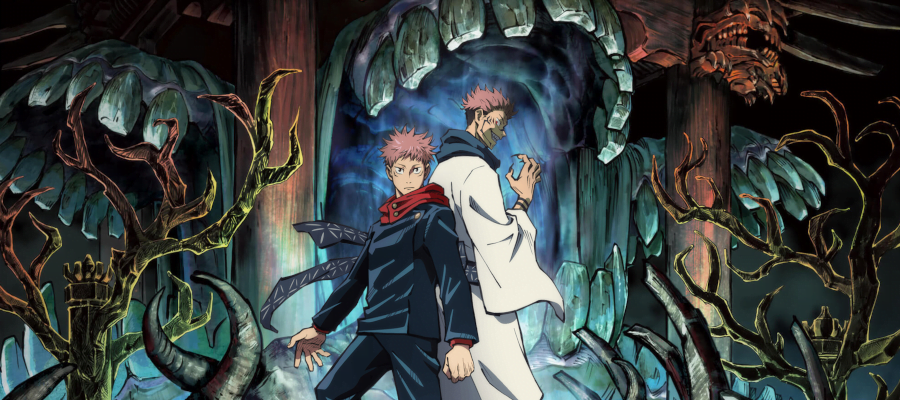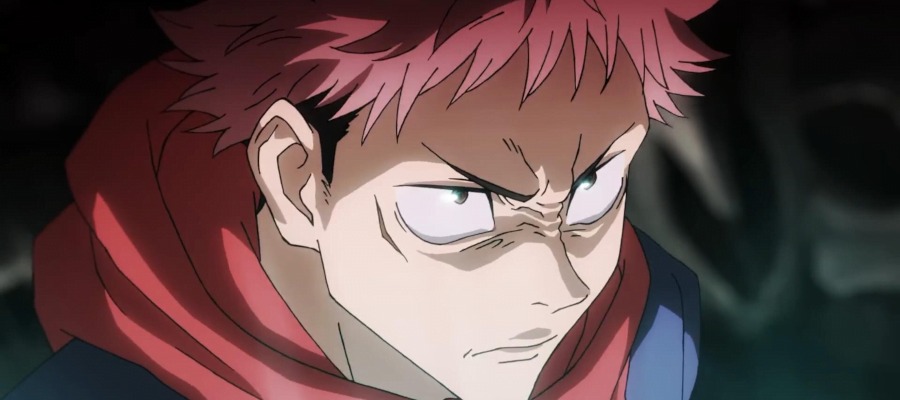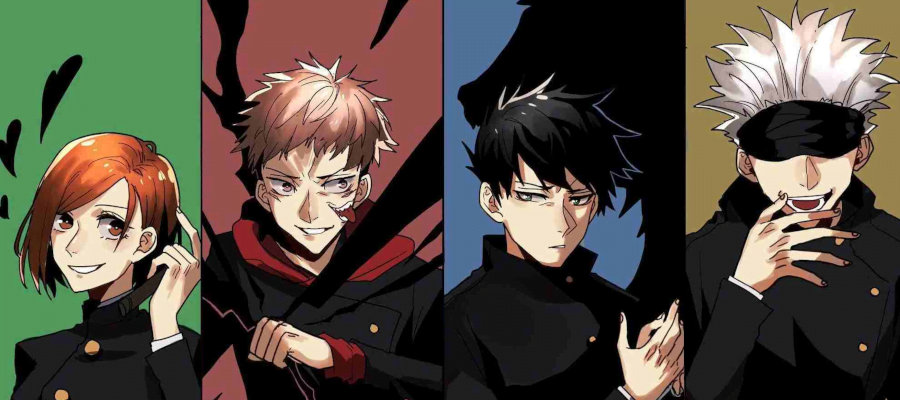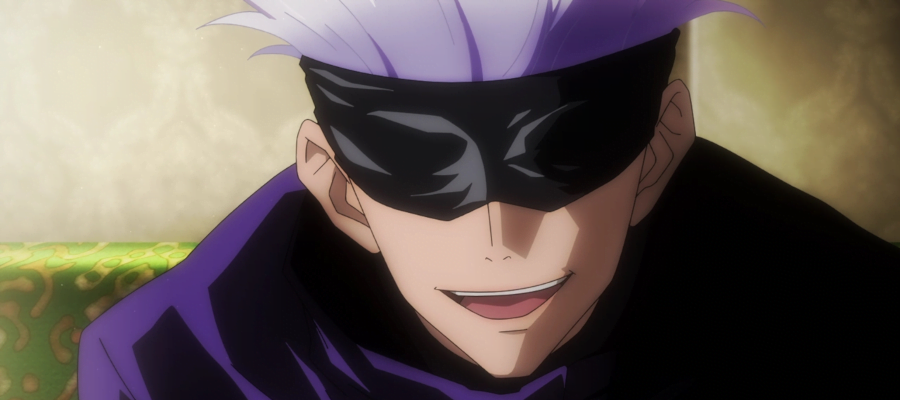Ya heard of this Jujutsu Kaisen thing?
It’s pretty good, I like it a lot.
Don’t worry, there are no spoilers after this point. Not even for the first episode. Jujutsu Kaisen is a really approachable series, if you accept up front you’re going to watch a violent horror anime full of likable characters who you’re going to see suffer as the show climbs to the latest peak of the latest heap that is The Next Big Shonen Battle Anime.
First, let’s get clear on what I mean when I say ‘the next big Shonen Battle Anime.’ Anime is genre media and that genre comes with assumptions about how stories do and don’t happen. Particularly, being genre media usually brings with it a sense of cheapness, and a whole economic model that indicates how this thing gets made and for whom.
In anime, the coolest looking thing that they want to sell statues of, is usually going to be important. The waifus will probably come out of it okay. The protagonist you’re used to will almost certainly survive and succeed. When they don’t, for anything successful, it’s shocking and often only shows up in smaller, shorter, less prominent media.
Inasmuch as you can measure these things Jujutsu Kaisen is a ‘big’ anime. It exists in the part of the art form that we tend to call ‘shonen battle anime’, which is a big broad grouping of stories that typically represents the most financially successful types. There was a time when three manga in that genre, known as ‘The Big Three’ were responsible for an enormous expansion of anime fandom across the whole world, and their publically recognisable identity became part of natural online existence. Those anime, One Piece, Bleach and Naruto have left their mark, but with two of them either ending or being ended, and One Piece now being comedically successful and seemingly unlikely to ever end, there’s been voids in the media landscape of businesses trying to recapture and grow that same market.
I think that’s why Attack on Titan, an aggressively mid and performatively selfserious series written by someone with babybrains about politics, got the push it did; it could step into the space left behind by the collapse of Bleach and the conclusion of Naruto. And that’s where you can kind of deduce the formula: We’re looking for an action battle anime with a twist. The twist for One Piece was pirates, the twist for Bleach was ghosts, the twist for Naruto was ninjas and the twist for Attack on Titan was vore.
The twist in Jujutsu Kaisen is horror.
There’s a challenge when you present horror anime. Anime is built on a host of visual signifiers and animation shortcuts that have become the language of the art form. There are whole things you don’t bother showing because a fast cut away from them conveys impact better than showing does, and people are used to it. This language means that anime watchers are often watching anime as if singing along with a song. You kinda know how it goes, and you’re here for seeing how the familiar bits get used.
This isn’t a bad thing by the way, this is just part of being genre media, where belonging to a genre is the important thing. And sure there are people doing other stuff, defying conventions, but the point is you have the structure and the style of the genre to work within. When I talk about ‘Shonen Battle Anime’ I’m really talking about a specific typing that’s also really varied. Like you wouldn’t necessarily look at One Piece and Jujutsu Kaisen and say ‘these two things are the same genre’ without being familiar with the things that signify the genre.
It’s a lot like a checklist, and that checklist can sometimes be a bit strange. There’s a whole paper waiting to be written about the different genre signifiers and their evolutions over time, especially since one of those signifiers is one of three magazines decided to publish this manga. Some of these concerns are also nakedly capitalist – like I said, there’s merchandising, there’s goods to move, and anime are made so cheaply with margins so thin and need to make so much money in secondary sales to justify their existence. This means that if an anime has like, four or five really merchandisable hot girls in them, that might push them forwards.
What’s more, these things are made in stages – it’s not like there’s a completed final work that then gets released a bit at a time. So sometimes a thing gets made where there’s enough of that initial juice, enough of that initial impression to move it, but then the conclusion kinda falls apart because the maker didn’t have a place to go, which makes the discipline of working on these things pretty challenging. One of the genre markers then, one of the things that becomes a mark of quality, is a story that doesn’t wind up going back on itself, and builds on rules that are reasonably well established early on. Often this is done by keeping things obscure early on, with things like school training arcs where you can be given mostly-true or partially-true information but also learn that it’s more complicated later. Sometimes it’s done by a sort of ‘training wheels’ mode where the first few story arcs focus on a particular way the world works then bam, surprise, everything changes and the story scope gets bigger.
To give the simplest description I can then, shonen battle anime is a genre defined by stories that are trying to appeal to an audience starting at adolesence, where the story is typically focused on boys and things boys are expected to like, and where the events of the story are resolved most of the time through impressive, exciting fights. This is just a summary of the structure, but that structure often brings with it ideas like training arcs and powerup sequences and fakeout deaths and and yes, a big final battle where people blast each other with something like wave motion cannons.
And then… the horror part. Hrm.
Horror’s hard! Horror is about creating feelings of foreboding and dread! It’s about being scary, unsettling or unpleasant and then making indulging in that experience something you can cope with and something you can engage with. When your whole genre underscores ideas like helplessness and vulnerability with also, then punching the bad thing in the face so hard it explodes then the explosions explode, you can wind up with a mismatch that undermines the horror. What makes Jujutsu Kaisen different then, special even, is the way that it balances the needs of its battle anime, with fights as puzzles where you find out which of the fightboys is the best fightboy at fightboying, and the absolutely meaningfully sense of persistent, realised horror.
Like, horror isn’t necessarily about threat. People wouldn’t love the genre with a trend of Final Girls if they weren’t capable of accepting the moment-to-moment feeling of a horror movie without necessarily needing the ending to work a particular way. Like horror media is trying to make you feel creeped out or horrified or whatever, despite you probably knowing that the end of the story is going to end up in one of a small number of boxes, right? It’s more about sustaining that feeling.
It can feel a bit naive, because the tension of a fight, especially a horrifying one, is ‘oh no, will our hero survive?’ And like, yeah, they’re not going to kill off the main character of the story in the first two arcs (probably). What Jujutsu Kaisen does instead is to make these battles into foreground material, where the collateral damage is stuff you care about. Back in Bleach, there were Kaiju ghosts and the souls of serial killers wandering around and yet largely, people weren’t in danger around them. It was much more about preventing the harm and knowing it wouldn’t, largely happen.
In Jujutsu Kaisen, the harm happens. People get hurt and die. People are traumatised physically. People are brutalised and left to recover medically so that a literal year of real world time can pass between finding out someone’s tenuous medical state has gotten better or worse and you don’t know for sure. Jujutsu Kaisen is a series that uses danger and harm to people and the world that has a permanence and a seriousness that action battle anime normally don’t present. The story sets up a set of safety nets and plays pretty fair by them: there are multiple things that can keep the story going, but they aren’t permanent and they aren’t free. People are aware of them and want to act around those things.
You might not want what Jujutsu Kaisen is offering, but god damn if it doesn’t serve it up excellently well. I like it a lot and I have not been disappointed by anything I find in this series, whether reading the manga or watching the anime.



